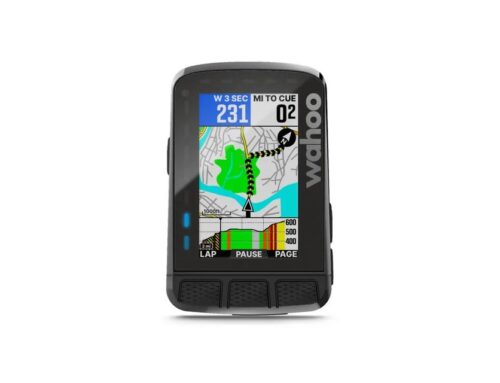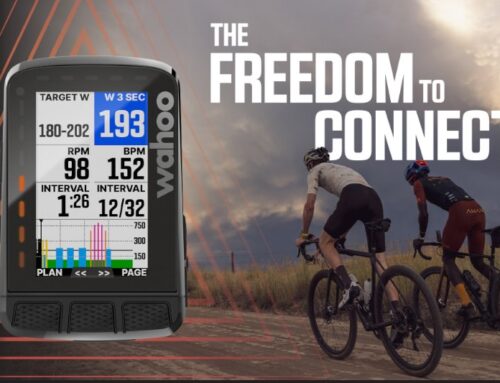Unlock Potential with Wearables in Endurance Training
Welcome to an insightful discussion on the role of wearables in endurance training. As athletes seek innovative ways to enhance their training routines, wearables have become a popular option due to their ability to provide real-time feedback and optimize workouts. With wearables, athletes can track their progress, identify areas for improvement, and make strategic adjustments to achieve their fitness goals.
Key Takeaways
- Wearables are an excellent tool for optimizing workouts and tracking progress in endurance training.
- Using wearables can lead to enhanced performance and provide valuable insights into training strategies.
- There are various types of wearables available, including smartwatches, fitness trackers, and heart rate monitors.
- Wearables can help monitor heart rate, performance, distance, pace, cadence, recovery, and sleep patterns.
- By analyzing data collected from wearables, training plans can be personalized to suit individual needs and prevent overtraining.
The Benefits of Wearables in Endurance Training
Wearables can revolutionize the way athletes train, providing a range of benefits to help optimize performance and achieve personal goals.
Enhanced Performance
Wearables such as smartwatches and fitness trackers offer real-time feedback on crucial performance metrics, allowing athletes to adjust their training on the fly for maximum efficiency. By monitoring heart rate, distance, pace, and other factors, wearables can provide insights into areas where improvement is needed and help athletes optimize their workouts.
Insights into Training Strategies
Wearables also provide valuable data for analyzing training strategies, helping athletes fine-tune their approach and make informed decisions about their workouts. By tracking progress over time, wearables can help athletes set realistic goals and adjust their training plans accordingly.
"Wearables are a game-changer in endurance training, providing real-time feedback and insights into training strategies that were previously impossible to capture."
Real-Time Feedback
One of the most significant benefits of wearables is the ability to receive real-time feedback during workouts. This allows athletes to make adjustments on the fly and push themselves to their limits, helping them achieve their full potential.
Convenience and Versatility
Wearables are convenient and versatile, easily integrated into an athlete's daily routine and providing valuable insights into their training and performance. With so many different types of wearables available, athletes can choose the device that meets their specific needs and goals.
Motivation and Support
Finally, wearables can provide motivation and support to athletes, connecting them with a community of like-minded individuals who share their passion for endurance training. This sense of community can be a powerful motivator, inspiring athletes to push themselves harder and achieve their goals.
In summary, wearables are an invaluable tool for endurance athletes, providing real-time feedback, insights into training strategies, convenience, versatility, motivation, and support. By incorporating wearables into their training routine, athletes can unlock their full potential and achieve their personal bests.
Types of Wearables for Endurance Training
When it comes to wearables in endurance training, there are a variety of devices available to help athletes track and monitor their progress. Here are some of the most popular types of wearables:
| Device | Description | Features |
|---|---|---|
| Smartwatches | A watch that connects to a smartphone and offers increased functionality. | GPS, heart rate monitoring, workout tracking, music control, smartphone notifications |
| Fitness Trackers | Worn on the wrist to track daily activity, including exercise. | Step count, distance tracking, heart rate monitoring, calorie burn |
| Heart Rate Monitors | A device worn around the chest or wrist to monitor heart rate. | Heart rate monitoring, workout tracking, calorie burn |
| Running Watches | Similar to smartwatches, with additional features specific to running. | GPS, distance tracking, pace monitoring, cadence tracking, workout tracking |
Each type of wearable has its own unique features and benefits, and athletes should choose one that best suits their needs and preferences.
Monitoring Heart Rate and Performance
One of the most significant benefits of using wearables in endurance training is the ability to monitor heart rate and performance. Heart rate monitors can provide real-time feedback on how hard an athlete is working, allowing them to optimize their training zones and make adjustments for better results.
Performance tracking is another valuable feature of wearables. By collecting data on metrics like pace, distance, and cadence, athletes can analyze their performance and set goals for improvement. This data can also be used to develop personalized training plans that focus on an athlete's specific needs and weaknesses.
Heart rate and performance data can be visualized and analyzed in a variety of ways. For example, a table can be used to compare an athlete's heart rate data during different types of workouts, such as steady-state cardio versus high-intensity interval training. The data can also be presented in a graph to help athletes visualize their progress over time.
Comparing Heart Rate Data
| Workout Type | Average Heart Rate (bpm) |
|---|---|
| Steady-state cardio | 140 |
| High-intensity interval training | 175 |
As demonstrated in the table above, high-intensity interval training resulted in a significantly higher average heart rate compared to steady-state cardio. This indicates that athletes may experience a more intense workout and burn more calories during HIIT sessions.
Overall, wearables that can monitor heart rate and track performance provide athletes with valuable insights into their training and progress. By using this data to optimize their workouts, athletes can reach their full potential and achieve their endurance training goals.
Tracking Distance, Pace, and Cadence
Wearables can provide runners and other endurance athletes with valuable data on their distances covered, pace, and cadence. By monitoring these metrics, athletes can gain insights into their training, measure progress, and set goals to achieve peak performance.
Distance tracking: Wearables equipped with GPS technology can accurately track the distance covered during a workout, whether on a trail or treadmill. This data helps athletes monitor their progress, set targets, and push themselves to go farther.
Pace monitoring: Knowing one's pace during an endurance workout is crucial to measuring progress and optimizing performance. Wearables can provide real-time data on pace, allowing athletes to adjust their speed mid-workout and stay on track to meet their goals.
Cadence tracking: The number of strides taken per minute, or cadence, is another important metric for endurance athletes. By monitoring cadence, athletes can adjust their form and reduce the risk of injury, while improving overall efficiency. Wearables with built-in cadence meters can provide real-time feedback and enable athletes to make adjustments on the go.
Comparing Wearables for Distance, Pace, and Cadence Tracking
| Wearable | Distance Tracking | Pace Monitoring | Cadence Tracking |
|---|---|---|---|
| Smartwatch A | GPS tracking with accurate distance measurements | Real-time pace data and alerts for pace changes | Accurate cadence measurement with built-in sensor |
| Fitness Tracker B | Built-in GPS with distance tracking capabilities | Real-time pace monitoring and alerts for pace changes | Cadence tracking with third-party accessory |
| Heart Rate Monitor C | No GPS, distance tracking based on stride length estimation | Real-time heart rate monitoring with estimated pace | Cadence tracking with third-party accessory |
"Comparing different wearables can reveal the strengths and weaknesses of each device. Athletes should consider their specific needs and goals when selecting a wearable to track their distances, pace, and cadence."
- Distance tracking is essential for track runners and cross-country athletes.
- Pace monitoring is important for marathon runners and triathletes.
- Cadence tracking can benefit runners of all distances and is especially useful for those prone to injury.
Overall, wearables can help endurance athletes track their progress, set targets, and make adjustments to their training routines. By enabling distance tracking, pace monitoring, and cadence tracking, wearables offer valuable insights for optimizing performance and achieving personal bests in endurance training.
Analyzing Recovery and Sleep
Recovery and sleep are critical components of endurance training. Without proper recovery, athletes risk overtraining and injury. Wearables can provide insights into recovery and sleep patterns, allowing athletes to optimize their training programs.
Recovery analysis is an important feature of wearables in endurance training. Recovery tracking provides data on an athlete's readiness to train by measuring heart rate variability, which is an indicator of stress on the body. By analyzing recovery data, athletes can adjust their training load and avoid overtraining.
Sleep tracking is also an essential feature of wearables for endurance training. Sleep plays a crucial role in recovery and overall health. Wearables can track an athlete's sleep duration, quality, and cycles. By analyzing sleep data, athletes can adjust their sleep habits to optimize their recovery and improve their overall performance.
"Sleep is the most important aspect of recovery. It's where the magic happens; it's where the body heals itself."
By analyzing recovery and sleep with the help of wearables, athletes can optimize their training programs, prevent injury, and improve their overall performance.
Personalizing Training Plans with Wearables
One of the most significant benefits of using wearables in endurance training is the ability to personalize training plans. With the insights gained from tracking and monitoring training data, athletes can tailor their workouts to achieve their specific goals.
By analyzing data such as heart rate, pace, and cadence, athletes can adjust their training zones and make informed decisions regarding training intensity and frequency. Wearables can also help athletes prevent overtraining by monitoring recovery time and suggesting rest periods.
Training plan personalization is particularly useful for individuals who have specific health concerns or limitations. Wearables can help athletes understand their physical limitations and adjust their workouts accordingly, minimizing the risk of injury and optimizing performance.
Example of Personalizing Training Plans with Wearables
| Training Goal | Training Plan |
|---|---|
| Improve Distance | Use a GPS-enabled smartwatch to track distance and pace during runs. Increase distance by no more than 10% each week and incorporate interval training to improve speed. |
| Reduce Injury Risk | Monitor heart rate and recovery time with a fitness tracker. Use data to adjust training zones and incorporate rest days to prevent overtraining. |
| Optimize Performance | Track and analyze cadence with a foot pod or running dynamics sensor. Use data to improve running form and reduce energy expenditure, optimizing performance during races. |
As demonstrated in the above table, wearables can provide personalized recommendations for achieving specific training goals. By utilizing the data provided by wearables, athletes can optimize their training plans and reach their full potential.
Connecting with a Community
Wearable technology has revolutionized the way endurance athletes can connect with a community of like-minded individuals. With the help of wearables, athletes can join online groups or sign up for challenges, fostering healthy competition and a sense of community engagement. The social aspect of these wearables can provide motivation and support, making the journey towards fitness goals a little less daunting.
Moreover, wearables can track progress and showcase achievements, allowing athletes to share their successes with others in the community. This can fuel friendly competition and inspire others to push themselves towards their own fitness goals. Whether it's through a fitness tracker, smartwatch, or heart rate monitor, wearables provide a platform for athletes to connect and engage with others who share their passion for endurance training.
"Joining an online fitness community helped me stay motivated to achieve my fitness goals. With the help of my wearable, I was able to track my progress and share it with others. The support and encouragement helped me push beyond my limits." - John, marathon runner
Overcoming Challenges and Staying Motivated
While wearables in endurance training can provide many benefits, athletes may face challenges when trying to stay motivated. Fortunately, there are several strategies that can be implemented to overcome these challenges and remain on track.
Setting Realistic Goals
One of the biggest challenges for athletes can be setting realistic goals. It's important to remember that achieving significant progress takes time, so setting small, achievable goals is key to staying motivated. Wearables can help with this by providing real-time feedback on progress and helping athletes track their achievements.
Switching Up the Routine
Another challenge that many athletes face is boredom with their routine. This can make it difficult to stay motivated and on track. To combat this, try switching up workouts and incorporating new types of activities into your routine. Wearables can help with this by offering suggestions for new workouts based on individual performance data.
Joining a Community
Connecting with a community of like-minded individuals can be a powerful motivator. Wearables can help facilitate this by connecting athletes with others who share similar goals and interests. Whether it's a virtual community or an in-person group, having a support system can help athletes stay motivated and accountable.
Tracking Progress
Another effective strategy for staying motivated is to track progress. Wearables can help athletes do this by providing data on performance, heart rate, and other metrics. Tracking progress can help athletes see how far they've come and provide motivation to keep pushing forward.
Celebrating Achievements
Finally, it's important to celebrate achievements along the way. This can help athletes stay motivated and focused on their goals. Wearables can help with this by providing personalized insights and celebrating milestones.
Overcoming challenges and staying motivated can be difficult, but with the help of wearables, athletes can optimize their training, track progress, and achieve their full potential.
Conclusion
In conclusion, wearables in endurance training are valuable tools that can help athletes reach their full potential. By enabling individuals to optimize their workouts, track progress, and set goals, wearables enhance performance and provide real-time feedback.
Wearables come in different forms, including smartwatches, fitness trackers, and heart rate monitors. These devices track and monitor training data, including heart rate, distance, pace, and cadence.
Monitoring heart rate and performance during training is essential for optimizing training zones and making adjustments for better results. Wearables can provide insights into recovery and sleep patterns, helping athletes optimize their recovery strategies.
Data collected from wearables can also be used to personalize training plans, set realistic goals, and prevent overtraining. Wearables connect athletes with a community of like-minded individuals, providing motivation, support, and healthy competition.
While wearables can be challenging to use, they help individuals overcome plateaus, track progress, and celebrate their achievements. By unlocking their full potential with the help of wearables, endurance athletes can achieve their goals and surpass their expectations.
FAQ
What are wearables in endurance training?
Wearables in endurance training are devices that can be worn on the body, such as smartwatches, fitness trackers, and heart rate monitors, to track and monitor various aspects of training data and performance.
What are the benefits of using wearables in endurance training?
Wearables in endurance training offer several benefits, including enhanced performance, real-time feedback, insights into training strategies, and the ability to track progress and set goals for improved results.
What types of wearables are available for endurance training?
There are various types of wearables available for endurance training, including smartwatches, fitness trackers, heart rate monitors, and other devices that can track and monitor training data.
How can wearables help in monitoring heart rate and performance?
Wearables can help athletes monitor their heart rate and performance during endurance training by providing real-time feedback and insights into training zones, allowing for adjustments to optimize results.
How do wearables track distance, pace, and cadence during endurance workouts?
Wearables can track distance, pace, and cadence during endurance workouts through built-in sensors and GPS technology, providing valuable metrics that can be used to set goals, analyze performance, and improve training efficiency.
Can wearables analyze recovery and sleep patterns?
Yes, wearables can analyze recovery and sleep patterns, providing insights into an athlete's rest and recovery strategies. This information can be used to optimize recovery and prevent overtraining.
How can wearables personalize training plans for endurance athletes?
Wearables collect data that can be used to personalize training plans for endurance athletes. This data can inform the customization of workouts, the setting of realistic goals, and the prevention of overtraining.
Can wearables connect endurance athletes with a community?
Yes, wearables can connect endurance athletes with a community of like-minded individuals, providing motivation, support, and healthy competition. This social aspect can help athletes stay motivated and engaged in their training.
How can wearables help athletes overcome challenges and stay motivated?
Wearables can help athletes overcome challenges and stay motivated by providing insights into progress, tracking achievements, and offering strategies to overcome plateaus. They act as a constant reminder and source of motivation throughout the training journey.





